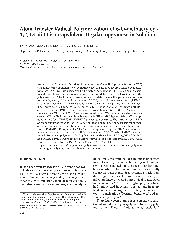摘要
A detailed exploration of the atom transfer radical polymerization (ATRP) of a sugar-carrying monomer, 6-O-methacryloyl-1,2;3,4-di-O-isopropylidene-D-galactopyranose (MAIPGal) was performed. The factors pertinent to ATRP, such as initiators, ligands, catalysts, and temperature were optimized to obtain good control over the polymerization. The kinetics were examined in detail when the polymerization was initiated by methyl 2-bromoisopropionate (2-MBP), ethyl 2-bromoisobutyrate (2-EBiB), or a macroinitiator, [alpha-(2-bromoisobutyrylate) -omega-methyl PEO] (PEO-Br), with bipyridine (bipy) as the ligand at 60 degreesC or by 2-EiBB with N,N,N-I,N-II,N-III-pentamethyldiethylenetriamine (PMDETA) as the ligand at room temperature (23 degreesC). The effects of the catalysts (CuBr and CuCl) were also investigated. We demonstrate that the successful ATRP of MAIPGal can be achieved for 2-EBiB/CuBr/bipy and 2-MBP/CuCl/bipy at 60 degreesC and for 2-EBiB/CuBr/PMDETA at room temperature. The initiation by 2-EBiB at room temperature with PMDETA as the ligand should be the most optimum operation for its moderate condition and suppression of many side reactions. Chain extension of P(MAIPGal) prepared by ATRP with methyl methacrylate (MMA) as the second monomer was carried out and a diblock copolymer,P(MAIPGal)-b-PMMA, was obtained. Functional polymers, poly(D-galactose 6-methacrylate) (PGMA), PEO-b-PGAM, and PGMA-b-PMMA were obtained after removal of the protecting groups.
- 出版日期2005-2-15
- 单位北京大学
